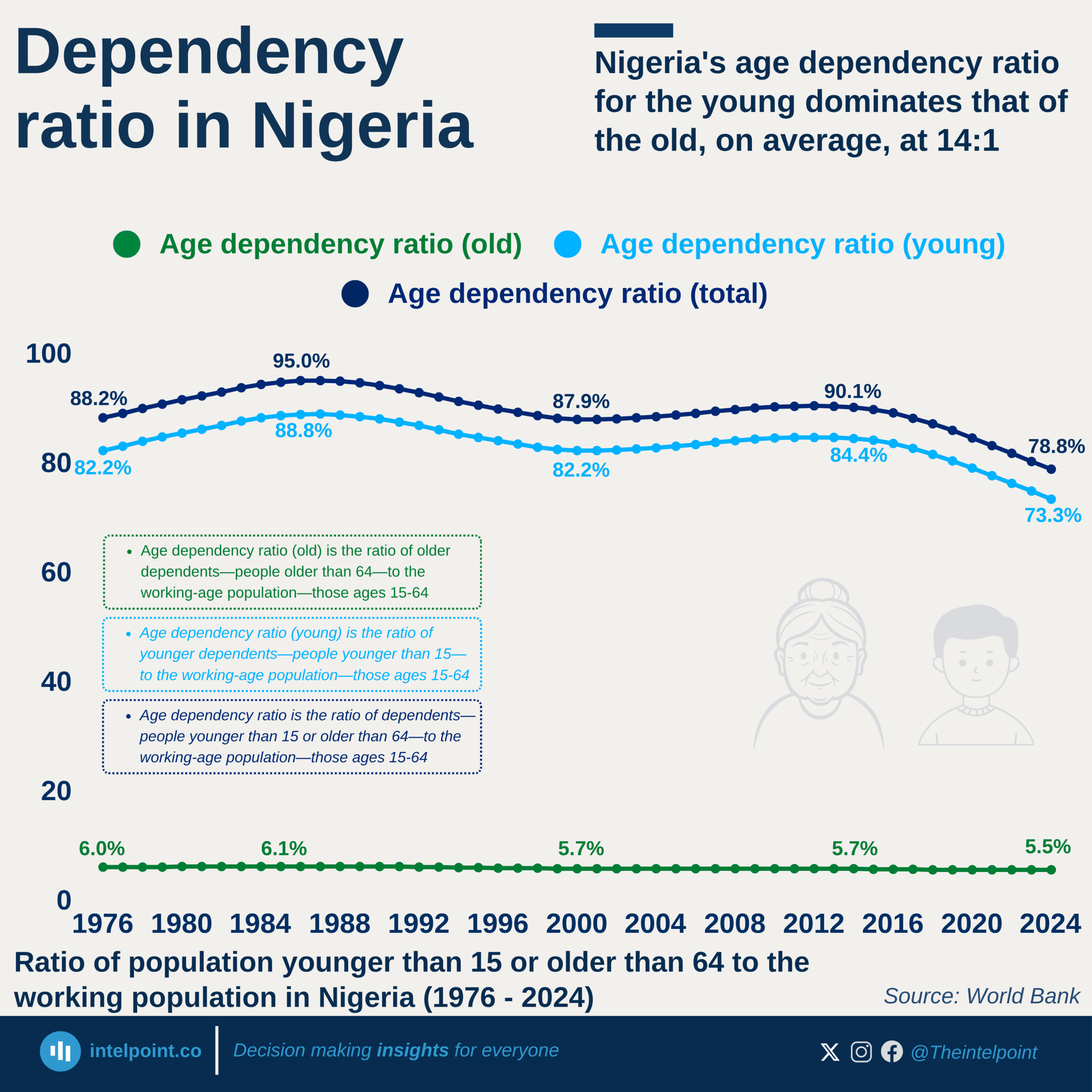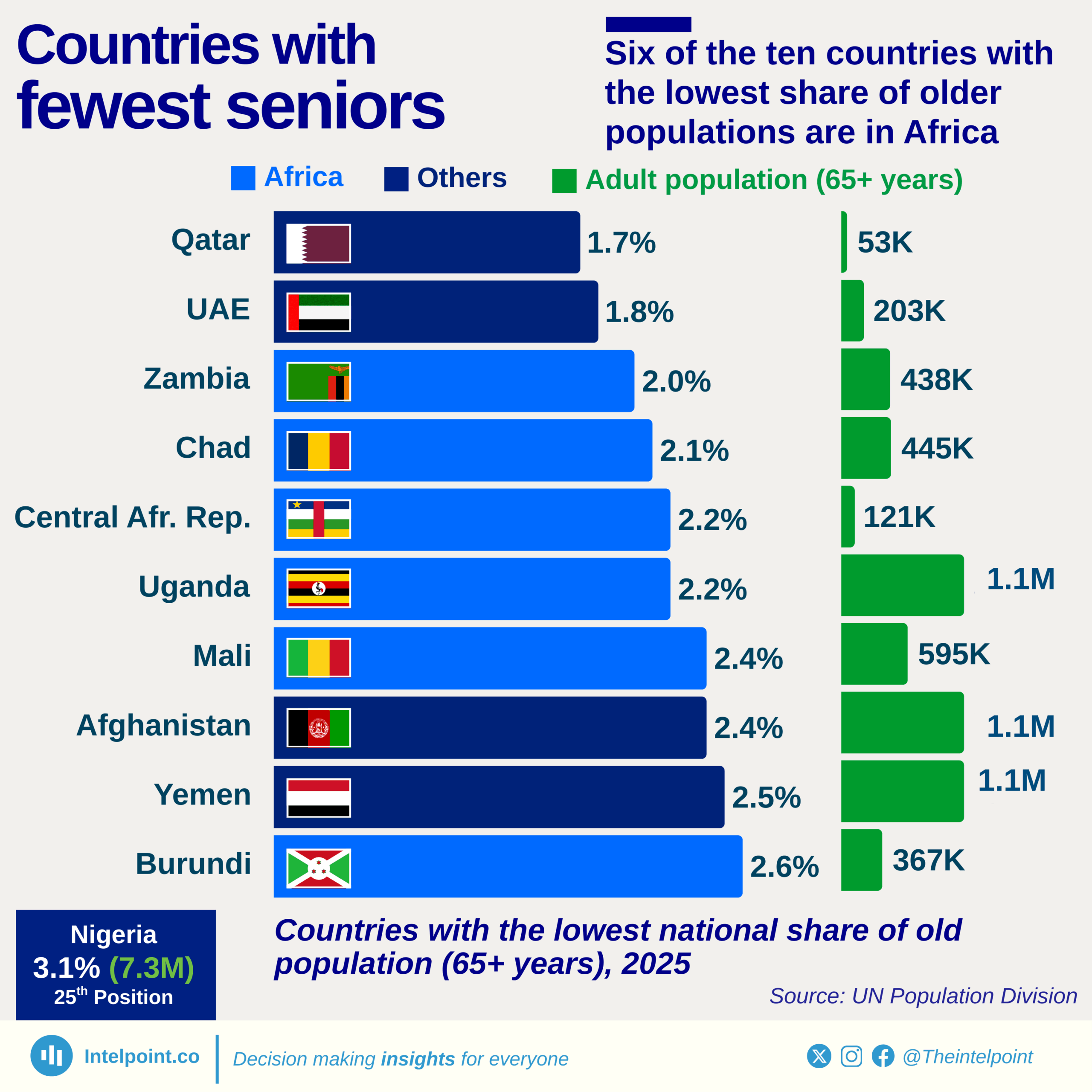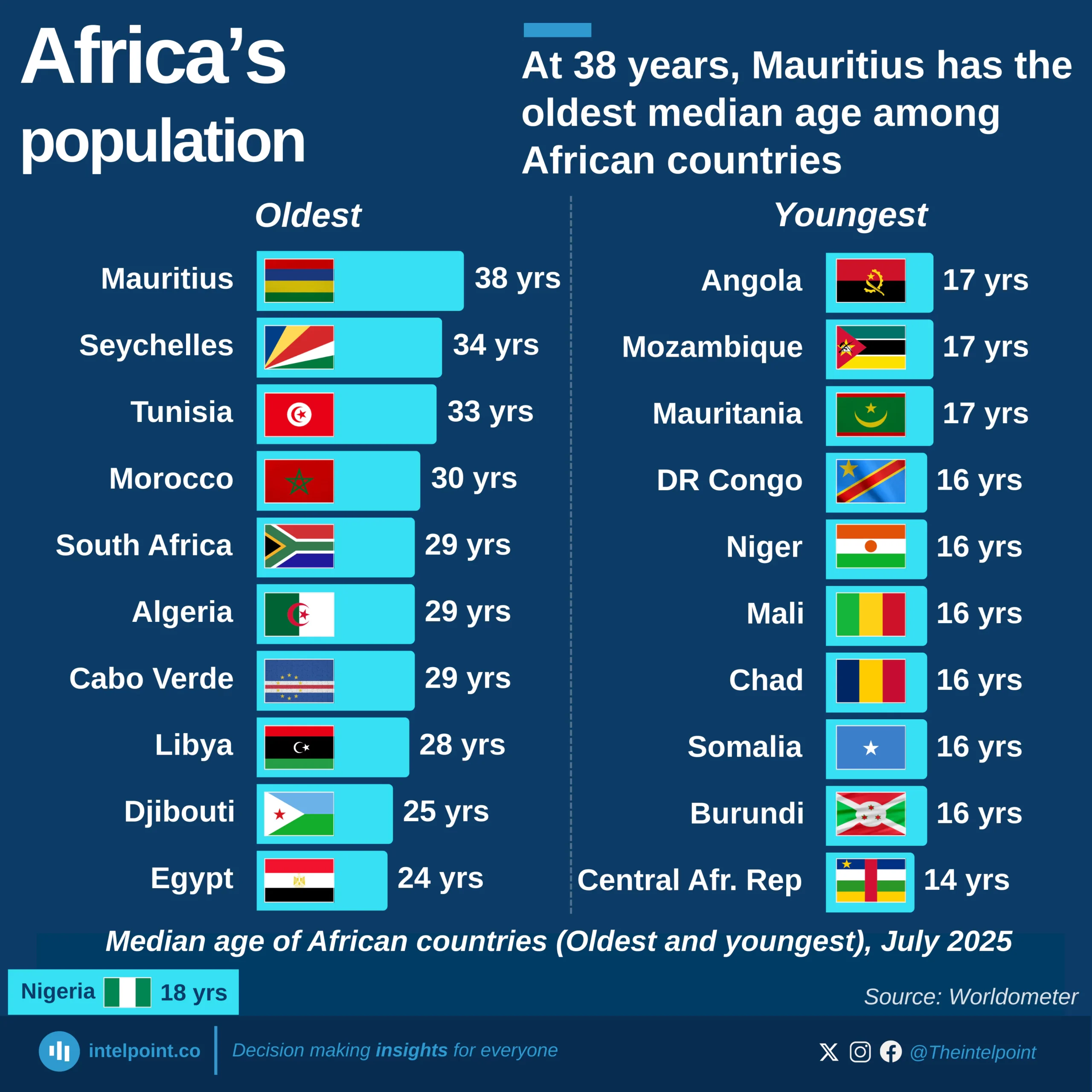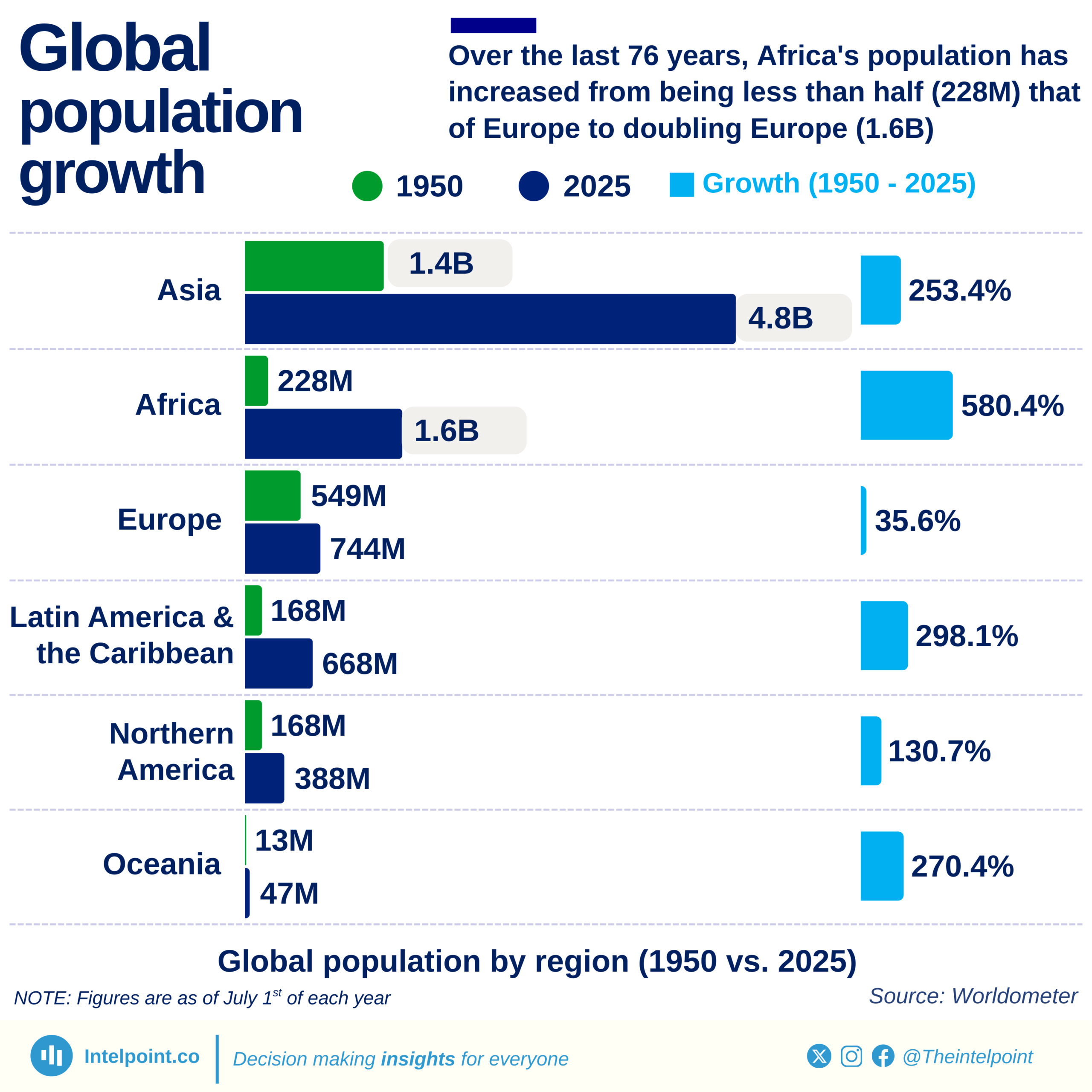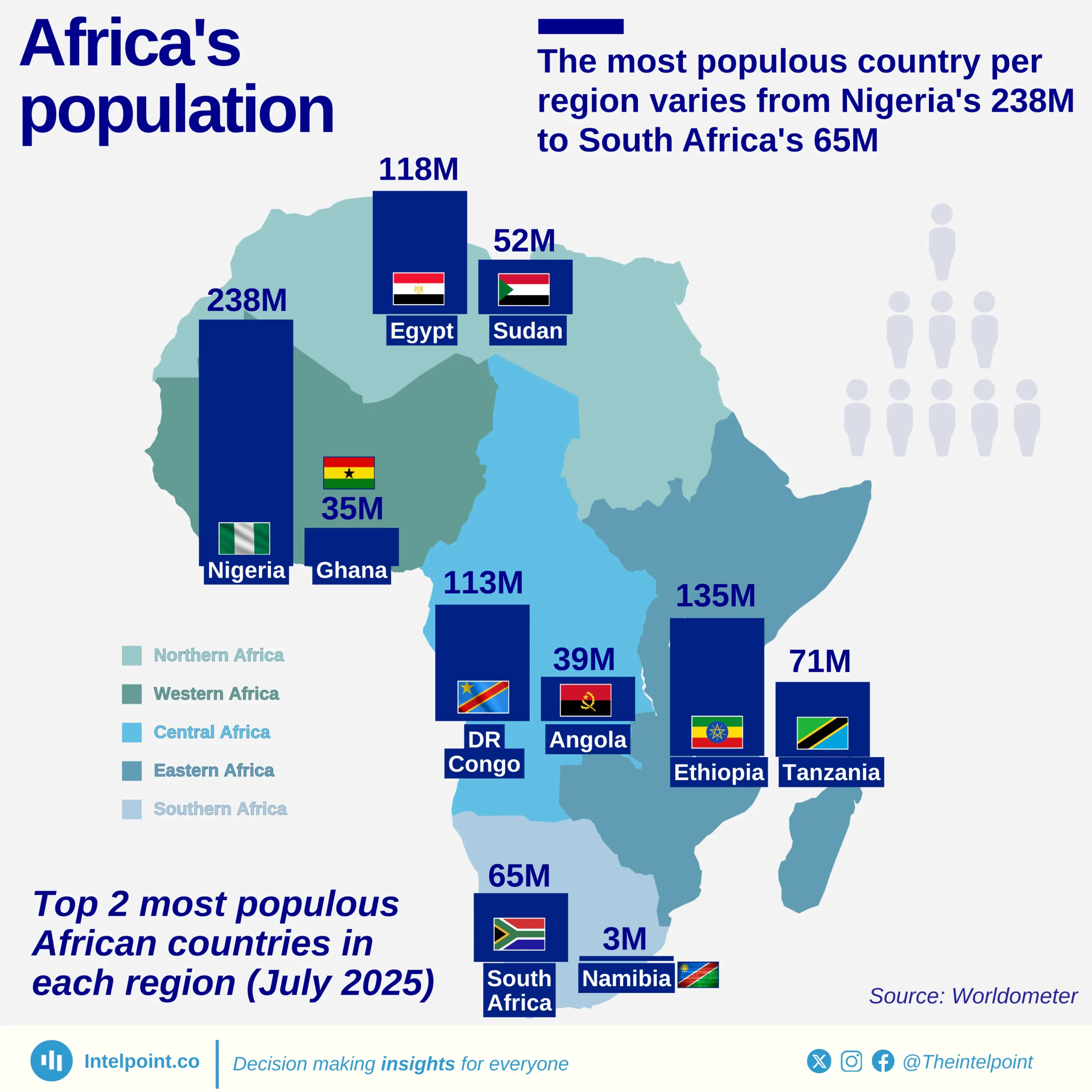Nigeria’s population structure reflects a clear youth dominance, with Millennials (29 - 44 years) and Gen Z (13 - 28 years) alone making up more than half (50.1%) of the population. When Gen Alpha is added, the young population rises to an overwhelming 85.7%. This generational profile highlights a dynamic demographic shift with massive implications for policy, innovation, consumer markets, education, and labour force planning. Nigeria is not just a young nation — it will need to build systems for and around a majority that is still growing into its full economic potential.
Gen Alpha, the youngest and fastest-growing generation, already makes up 35.6% of Nigeria’s population, more than any other group. Gen Z follows with 25.8%, reflecting the continued momentum of a young and digitally native population. Millennials, once the largest generation, now make up 24.3% but still wield considerable economic and social influence. These three groups combined dwarf older generations like Gen X (9.2%) and Baby Boomers/Silent Generation (5.1%).
